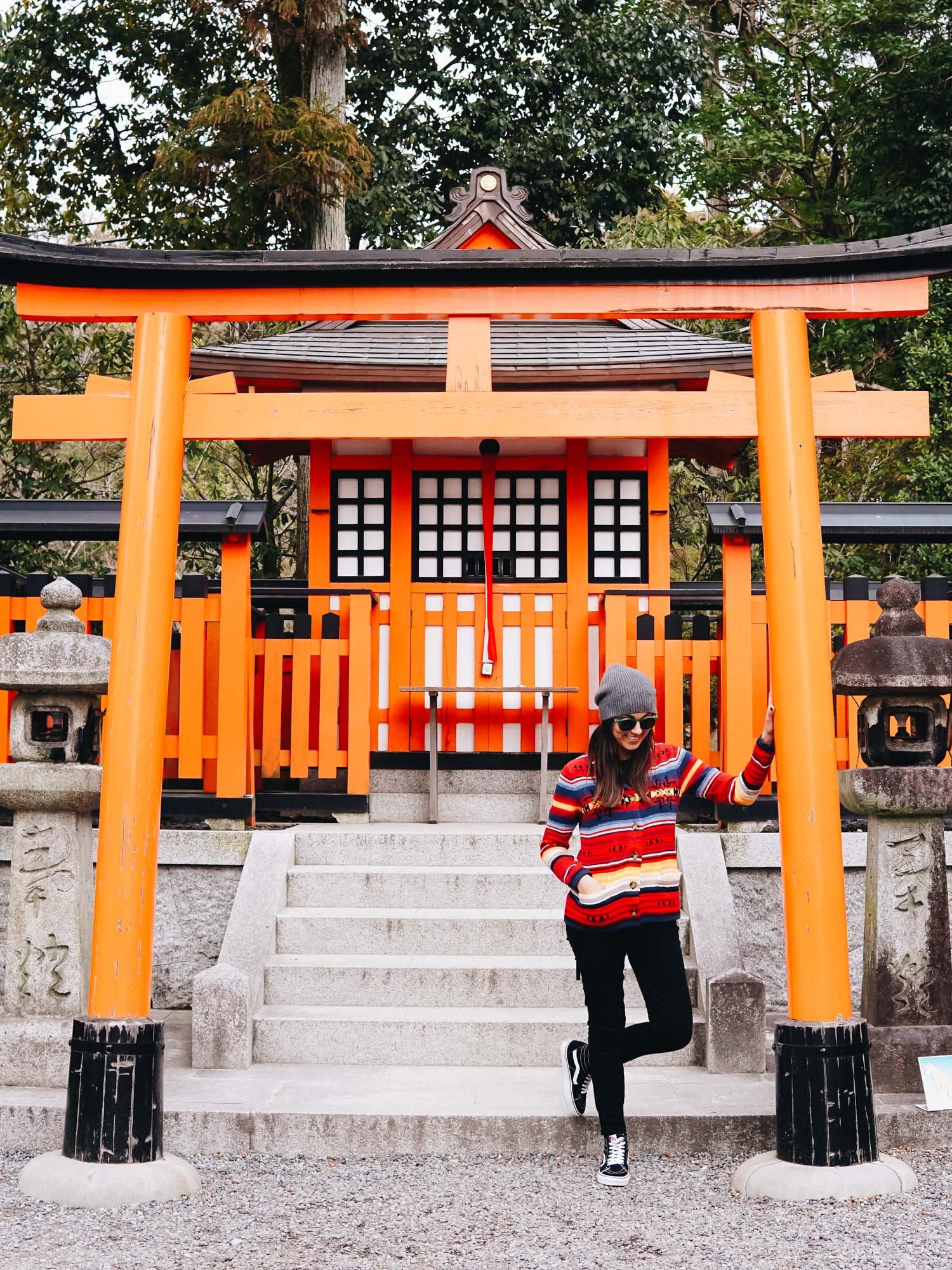Walk Through Thousands of Bright Orange Torii at Fushimi Inari-Taisha Shrine in Kyoto
At the base of Mount Inari in Kyoto, Japan, the Fushimi Inari-Taisha Shrine stands as a testament to centuries of spiritual devotion and cultural richness. It was also my favorite place to visit in Japan (so far). Renowned for its thousands of bright orange torii gates that form a mesmerizing pathway up the mountain, this sacred site is a must-visit for travelers seeking a blend of history, tradition, and natural beauty.
Info & Practical Tips for Visitors
Free to visit
Location: Fushimi Inari Taisha
Timing is Key: While Fushimi Inari-Taisha is a popular destination year-round, consider visiting early in the morning or during weekdays to avoid large crowds.
Comfortable Footwear: The trail up the mountain can be challenging, so wear comfortable shoes for the hike. Don't forget to bring water to stay hydrated.
Cultural Respect: As with any sacred site, be mindful of the customs and rituals. Photography is generally allowed, but refrain from disturbing ongoing ceremonies or blocking paths.
This shrine is free to visit, but if you prefer to learn more about this site you can opt to take a tour, here are a few highly rated ones I found on Get Your Guide:
The History
The origins of Fushimi Inari-Taisha Shrine date back to the 8th century when Hata-no-Irogu, a powerful Hata clan leader, dedicated the shrine to Inari, the Shinto god of rice and prosperity. Since then, the shrine has evolved into a sprawling complex with multiple sub-shrines, each contributing to its unique charm.
The Torii Gates
The most striking feature of Fushimi Inari-Taisha is the network of torii gates, known as Senbon Torii, lining the entire trail up the mountain. These vibrant gates, painted vermilion (bright orange), create avibrant pathway up the mountain, making it one of the most photographed locations in Kyoto.
The significance of the torii gates lies in their symbolic representation of the transition from the mundane to the sacred. As you ascend the mountain, you are not only treated to breathtaking views of Kyoto but also experience a spiritual journey through the winding paths and countless gates.
The Fox Guardians
Inari shrines are often associated with foxes, believed to be the messengers of Inari. Throughout the Fushimi Inari-Taisha grounds, visitors will see numerous fox statues, or "kitsune," adorned with red votive bibs. The foxes are considered guardians and are believed to possess mystical powers.
Each fox statue carries a key in its mouth, symbolizing the guardianship of the rice granaries.
Tasty Treats
There are loads of street vendors at the bottom of the mountain where you can try all types of street food. We wandered down consuming all types of delicious treats. Crab on a stick, mochi on a stick, kobe beef on a stick. Yes, pretty much everything was conveniently on a stick so you could grab it and go.
There are also many tourist shops at the bottom since this is such a widely known destination. You can find all kinds of trinkets to take home as gifts. I prefer eating my way through the streets but the shops were fun to browse. We also snagged some hot green tea lattes since it was a very cold February when we visited.
Fushimi Inari-Taisha Shrine is more than just a tourist attraction, it's a living testament to Japan's rich cultural heritage and spiritual traditions. Whether you're drawn by the allure of the torii gates, the mysterious fox guardians, or the peaceful sub-shrines, a visit to Fushimi Inari-Taisha is a must-see for anyone visiting Kyoto! It’s not to be missed.
Book a Tour
Book a full-day UNESCO and Historical Sites Tour in Kyoto that includes the very best of ancient Kyoto. There are so many wonderful sites to see!













